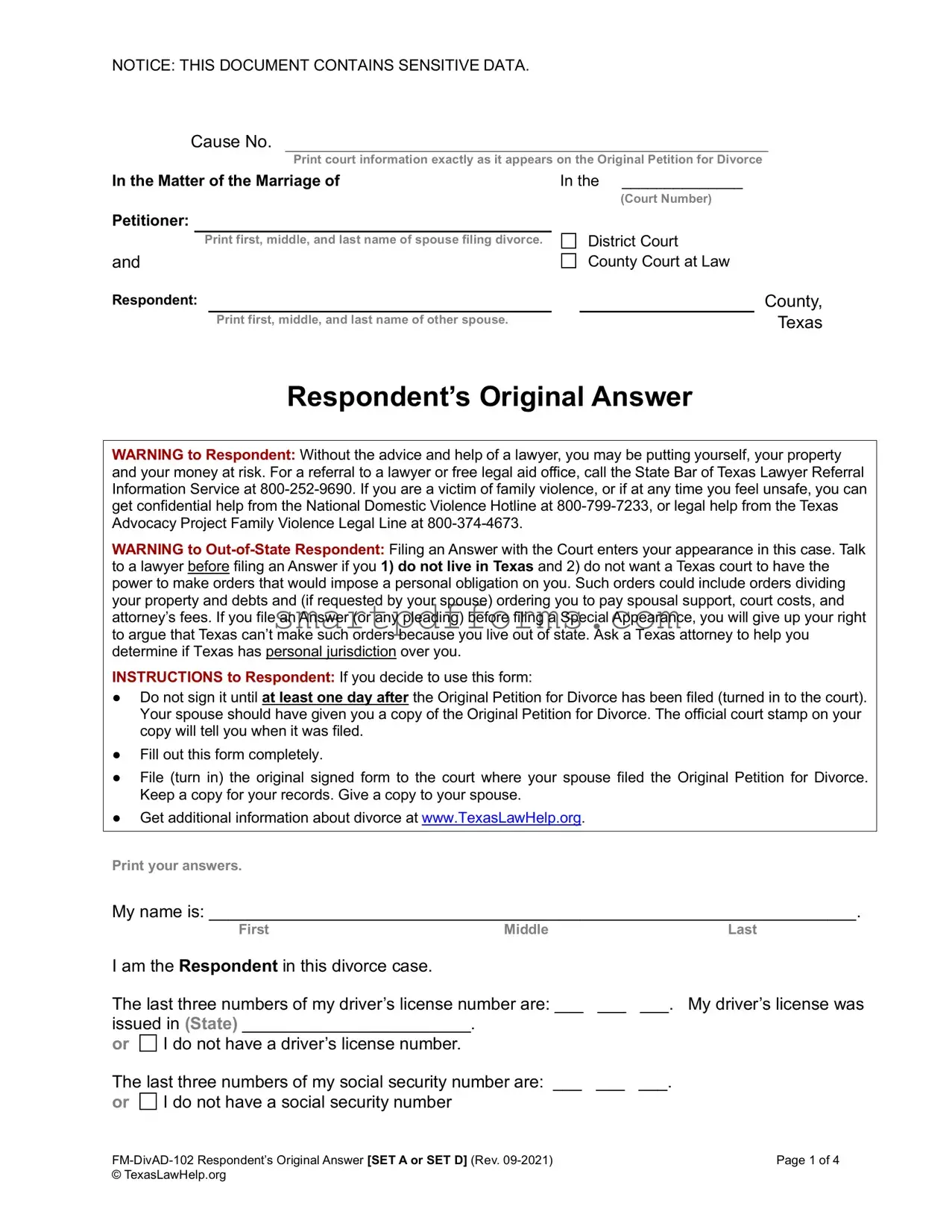1. General Denial
I enter a general denial. I want to be notified of all hearings in this case.
But, if my spouse and I reach an agreement and I sign a Final Decree of Divorce, I agree that the Judge can finalize this case without my getting notice of the hearing and without my coming to Court.
2. Contact Information
My mailing address is: ___________________________________________________________.
Mailing AddressCityState Zip
My email address is: ____________________________________________________________.
My phone number is: ________________________________________________.
I understand that I must notify the Court and my spouse’s attorney or my spouse (if my spouse does not have an attorney) in writing if my mailing address or email address changes during these divorce proceedings.
I understand that, unless I notify the Court, my spouse’s attorney or my spouse (if my spouse does not have an attorney) in writing of changes to my mailing address and email address, all information about this case, including the date and time of hearings, will be sent to me at the mailing address or email address on this form.
3. Discovery level
The discovery level in this case, if needed, is: (Check one box.)
Level 1. (Check here if you and your spouse have more than $0 and less than $250,000 in property.) Level 2. (All other couples check here.)
Check only if applicable.
 This is an action involving domestic violence and is exempt from the initial disclosure requirement under Texas Rule of Civil Procedure 193.2(d)(7).
This is an action involving domestic violence and is exempt from the initial disclosure requirement under Texas Rule of Civil Procedure 193.2(d)(7).
4. Separate Property
I own the following separate property. I owned this property before I was married, or I received this property as a gift or inheritance during my marriage, or I received this property as recovery for personal injuries sustained during my marriage (not including any recovery for loss of earning capacity during my marriage). I ask the Court to confirm this property as my separate property in my Final Decree of Divorce.
1. |
House or land located at: _______________________________________________________. |
|
|
|
|
street address |
|
city |
|
state |
ZIP |
2. |
Cars, trucks, motorcycles, mobile homes or other vehicles |
|
|
|
|
|
|
Year |
|
Make |
|
Model |
|
Vehicle Identification No. [VIN] |
|
|
|
|
|
|
|
|
|
|
|
|
|
|
|
|
|
|
|
|
|
|
|
|



 This is an action involving domestic violence and is exempt from the initial disclosure requirement under Texas Rule of Civil Procedure 193.2(d)(7).
This is an action involving domestic violence and is exempt from the initial disclosure requirement under Texas Rule of Civil Procedure 193.2(d)(7).
